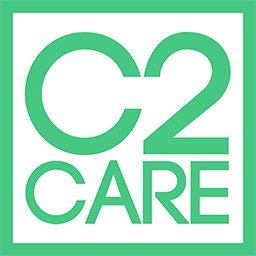Cognitive and Behavioural Therapies (CBT), an effective solution for your phobias
Cognitive and behavioural therapies (CBT) have been gradually developed in France since the 1970s. They are now widely advocated in the scientific and medical world. It is the standard type of treatment for mental disorders, particularly for phobias, eating disorders (anorexia and bulimia) and addictive behaviours (tobacco, alcohol, drugs, gambling). The aim of this method is to suppress the symptom and not to modify the psychic conditions of its appearance.

What is Cognitive Behavioural Therapy (CBT)?
Cognitive Behavioural Therapy (CBT) is a mental health therapy that will address different types of problems. With an emphasis on the experiential method, i.e. exposure, this therapy focuses on your behaviour, thoughts (cognitions) and emotions. CBT has been around since the second half of the 20th century and has a proven track record.
As part of brief therapy, CBT is a structured therapy, which focuses on problem solving rather than on finding the cause.
If you wish to undergo cognitive behavioural therapy, you should know that you will not be passive during your therapy but active.
During the therapy, your therapist will expose you to situations that correspond to your problem. Are you afraid to drive? The psychologist will take you on the roads that can be anxiety-provoking. All exposures are done progressively, at your own pace, in order to achieve the different objectives set.
You will be exposed in 3 possible ways:
- The therapist may ask you to imagine yourself in a difficult situation, and have you work on your emotions while you imagine yourself in the situation
- Some therapists can accompany you directly in the field, to be present and help you implement the different tools seen together
- Other therapists will use virtual reality beforehand in order to get you used to it and to provide you with the various tools for managing your emotions before a real exposure.
What is the purpose of CBT?
The aim of CBT is to help you to recognise, evaluate and modify the different cognitive patterns that have formed. By working on these different points, cognitive and behavioural therapies will help you to feel better in your daily life. In addition to working on your problem, it will provide you with different tools that will allow you to deal with your negative emotions, whatever the situation.
How does CBT work?
Often, the first session consists of a lot of discussion with your therapist. He will do what is called a “functional analysis“. Indeed, at first it is important to take stock of the reasons for your coming, the symptoms, the impact that this may have on your daily life. The aim is to understand as well as possible what you are feeling. To do this, you will take stock of your emotions, your thoughts and your behaviour. The therapist can fill in evaluation grids with you to assess your functioning. Together with your therapist, you will define the objective(s) to be reached throughout the therapy.
Afterwards, you will prioritise the situations with your therapist.
In the case of anxiety, for example, the hierarchy of situations will make it possible to make a list of environments from the least anxiety-provoking to the most anxiety-provoking for you.
During these first moments of discussion, the therapist will review with you psycho-education and the different scientific knowledge related to your problem. The latter has its place in the therapy and will allow you to understand how your emotions work, how the therapy works and the different terms that can be used…. In short, this part of the session will allow you to begin the process of change.
Even though a lot of psychoeducation is done at the beginning of the therapy, the professional will bring you new knowledge during the rest of the sessions.
The rest of the therapy will consist of 3 main tools:
- Progressive exposure
These exposures will be done initially through the medium of imagination or through virtual reality exposures. In this way, you will be able to observe your behaviour in this type of environment, your beliefs, thoughts and emotions that may emerge.
These exposures allow you to become accustomed to the situations, as well as to desensitise the symptoms, in order to extinguish your anxiety.
- Tools for managing emotions
Throughout the therapy and your exposures, the therapist will provide you with different tools that will allow you to manage (not control!) your emotions. These tools will allow you to stay in the situation, to cope with it, while gradually reducing your negative emotions. These tools are very varied to allow you to have a “toolbox”, from which you can pick according to your exposure. In these tools, you can find relaxation, meditation … or more physiological exercises such as cardiac coherence.
- Cognitive restructuring
The aim of cognitive restructuring is to target the thoughts that are linked to your negative emotions. There are different ways of doing this exercise, such as filling in charts, like the Beck chart. The aim of this part is to become aware of your cognitive distortions, your beliefs… The emphasis will be on identifying :
– Situations that provoke this negative emotion
– The negative emotion felt
– The thoughts that appear
– Alternative thoughts that can be more realistic and positive.
Then, the therapist will suggest that you start the in vivo exposures (if these were only in imaginary or virtual reality). For these exposures, either they will be accompanied by the therapist, or the professional will evaluate with you, the progressive situations in which you can expose yourself.
The therapy ends once the negative emotion is extinguished!
How to treat a phobia with Cognitive and Behavioural Therapies?
Cognitive Behavioural Therapies are now one of the most effective therapies for phobias.
Your therapist and you will determine the most anxiety-provoking environments and the least anxiety-provoking. In this way, you will be brought to find yourself in these different situations in a progressive way. During these exposures, you will put in place tools to manage your emotions and work on your automatic thoughts.
During this therapy, you will learn not to avoid but to face the anxiety-provoking situations. In view of the unpleasant symptoms of anxiety, this may seem difficult to you today… but you will learn to manage this anxiety.
As you are exposed to more and more situations, you will gradually get used to them. This habituation will lead to a decrease in the physical symptoms of anxiety, until the anxiety is gone.
How long does CBT last?
The duration of the therapy will depend on the problem to be addressed. On average, a CBT lasts between 10 and 15 sessions. The therapist will discuss with you at the beginning of the therapy the number of sessions needed to achieve the goal of the therapy.
Can CBT really help me?
-
Is CBT effective?
Numerous studies have evaluated the effectiveness of CBT. It is one of the first therapies recommended for phobias, OCD and other anxiety disorders (e.g. generalized anxiety, agoraphobia)..
-
Who can have CBT?
Anyone can receive cognitive behavioural therapy. Children, adults, elderly, with or without psychiatric disorders. In contrast to other passive therapies, this therapy requires a certain level of involvement on your part as well as a motivation to change.
-
Why do CBT?
This therapy is suitable for all types of psychological disorders, such as anxiety, phobias, panic disorders, addictions, depression, eating disorders and chronic pain.
Who does CBT?
In order to undergo cognitive-behavioural therapy, it is strongly recommended that a psychologist or psychiatrist trained in CBT be consulted.
Is CBT reimbursed?
It depends on the professional you are going to have during the therapy.
If the professional is a psychologist: Some psychologists’ sessions may be reimbursed under special schemes. It is important to check with your mutual insurance company to find out about possible reimbursement arrangements.
How to find a CBT psychologist?
There are several ways to find psychologists trained in CBT.
You can find catalogues of therapists in some of the major CBT training organisations. This way, you can be sure that the professionals are trained to treat you through CBT.
Other sites and platforms allow you to link health professionals and patients. Professionals can post their specialities and thus indicate their training in CBT.
Some sites also allow you to find psychologists trained in CBT in order to carry out remote monitoring, which allows you to carry out the therapy from your home, your office, etc. without having to travel.


